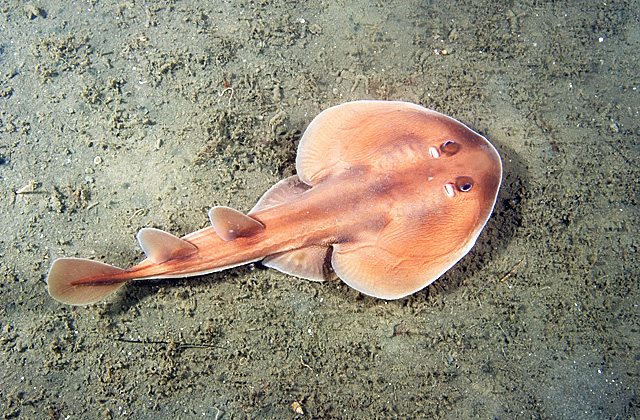Japanese electric ray
(Narke japonica)

Description
The Japanese sleeper ray (Narke japonica) is a species of electric ray in the family Narkidae.It is common in the inshore and offshore waters of the northwestern Pacific Ocean from southern Japan to southern China.Growing up to 40 cm (16 in) long,the Japanese sleeper ray has a nearly circular pectoral fin disc colored reddish to chocolate brown above,sometimes with darker or lighter spots,and lighter brown below.The spiracles behind its small eyes have raised,smooth rims.Its short and muscular tail bears a single dorsal fin positioned aft of the rounded pelvic fins,and terminates in a large caudal fin.Inhabiting shallow,sandy areas near rocky reefs,the Japanese sleeper ray is a bottom-dwelling predator of invertebrates.Like other members of its family,it can produce a strong electric shock from its electric organs for defensive purposes.Females give live birth to litters of up to five pups.The gestating young are sustained at first by yolk,and later by histotroph ("uterine milk").The International Union for Conservation of Nature (IUCN) has listed this species as Vulnerable,due to its susceptibility to trawl fisheries that operate intensively throughout its range.The Japanese sleeper ray has an almost circular pectoral fin disc wider than long.Two large,kidney-shaped electric organs are visible under the skin on either side of the head.The small,protruding eyes are immediately followed by larger spiracles with prominently raised,smooth rims.The nostrils are small and placed close together,and between them is a curtain of skin that overlaps the mouth.The protrusible mouth forms a short,transverse line and is surrounded by a deep groove.There are fewer than 25 tooth rows in each jaw,arranged into bands;the teeth are small with oval bases and pointed crowns.Five pairs of short gill slits are located on the underside of the disc.
Taxonomic tree:







